17 Things I Love About Scythe
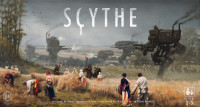
Last October, I wrote about an upcoming game on Kickstarter I was excited about — Scythe!
The initial funding goal was set at $33,000.
When the campaign ended in November, Scythe had received over $1.8 million in funding!
So I obviously wasn’t the only one excited about the game.
The buzz about Scythe didn’t end when the Kickstarter campaign ended. It’s been going strong all year.
Well, it’s now out and the Kickstarter backers have received their much anticipated game.
When our copy arrived a few weeks ago, I couldn’t wait to play it. Unfortunately, I had to wait because I left on a business trip the next day.
Of course I took the game rulebook with me so I’d be ready to play as soon as I got back home.
Now that I’ve been able to play it a number of times, has it lived up to the buzz?
Well, the title of this review has already given it away.
Scythe is an awesome game!
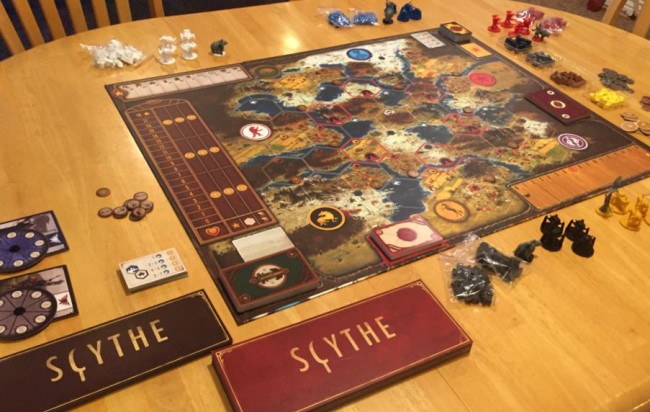
Can the whole family enjoy Scythe?
With a play time of close to 2 hours, Scythe is definitely not going to appeal to everyone. Nor should it.
As you can see from the photos alone, Scythe is a game with a lot of things to keep track of. There are plenty of rules for players to understand and then figure out how to get all of them working together.
It’s not for a casual gamer.
While there are some elements of luck in the game, the bulk of the game is strategic – driven by the choices the players make. And there are plenty of choices to make.
Players that don’t like that much thinking in a board game aren’t going to like Scythe.
In our family, one look at the game and mom and Brooke immediately know Scythe isn’t for them.
But for players who like to grow their faction through strategic choices, territory control, resource management, construction, upgrades, and combat, there’s a lot to love with Scythe!
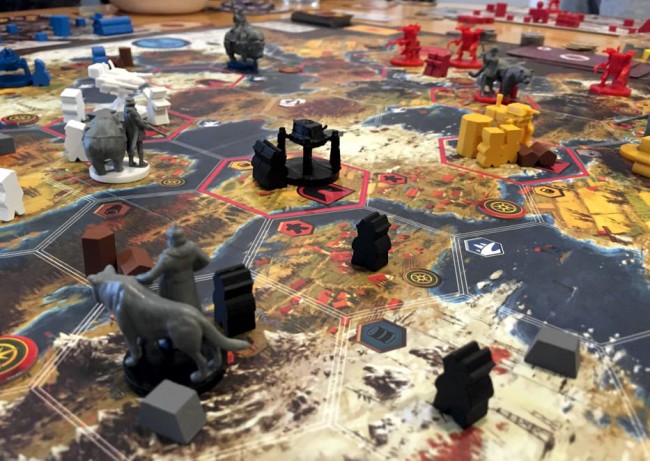
The many reasons I love playing Scythe
There are so many things I love about Scythe it’s hard to know where to begin.
And I could go on and on about each one of them.
But rather than ramble on, I’ll just write a short snippet about each aspect that I particularly love about the board game.
If you’d like to see some of it in action, then watch my video review of Scythe.
If you just want the high-level rundown, then here’s the list for you…
1. Artwork and Style: Before I dive into the game elements, I first have to tip my hat to the artwork. I love the art style! The look and feel creates the perfect ambiance for the game that makes it easy to get engaged in.
2. Unique Faction Abilities: Each player gets a random Faction that provides special rule-breaking abilities. Every faction is unique and playing to those strengths will go a long way to being successful in the game. In addition, the workers and Mechs of each faction are unique as well. Each faction has a cool style of its own.
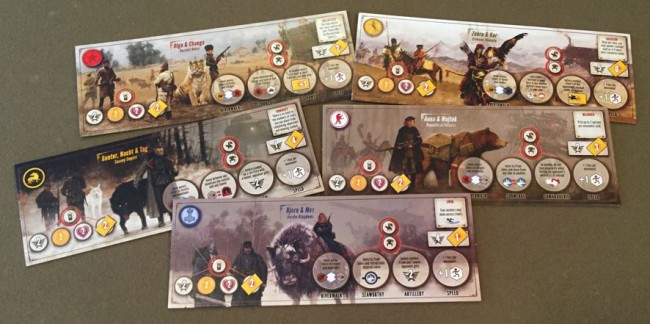
3. Player Mat Action Combinations: Each player mat includes the same top row actions and bottom row actions. However, the combinations are different on each board. One player may have the top Move action tied to the bottom Upgrade action while another player’s top Move action will be paired with a bottom Build action. So players must approach every game differently based on what they’re given.
4. Choosing Actions: Choosing which actions to take and when to take them is at the heart of the game. It’s like a puzzle because players can’t choose the same spot on their player mat on subsequent turns (except for one faction that breaks that rule). Players have to think through the order of their actions to build up for what they want to accomplish. The limitations keep players anxious for future turns the whole time.
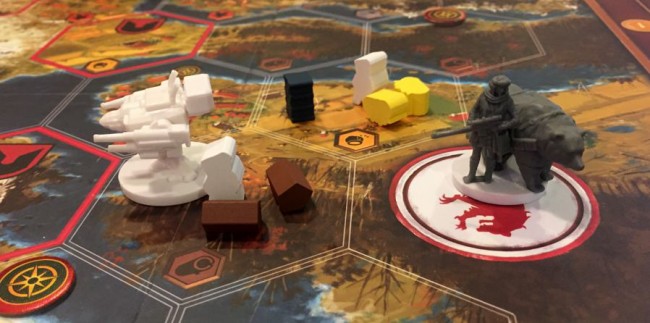
5. Rewarding Long-term Strategy: Because of the need to choose actions carefully, Scythe rewards players that can determine and carry out a long-term strategy. Granted, the strategy may need to be adjusted as other players make their moves. But overall, planning ahead is well worth the effort.
6. Varying Costs: All bottom actions on the player mats are the same for every player. However, the costs vary from mat to mat. For some, the cost to construct a Mech will be 3 Metal while for others it will be 4 Metal. But on the flip side, Enlisting Recruits may be reverse for those players with a 4 Food cost vs. a 3 Food cost. Which all leads up to one of the elements I love most…
7. Upgrading: The way upgrades are done in Scythe rocks! It’s one of my favorite parts of the game because it simultaneously increases the reward of a top action and decreases the cost of a bottom action. And players get to choose how to mix and match the updates. They can upgrade a spot in one top section of their player mat and place it on a different bottom section. The options are plentiful and leave many things to try in future plays.
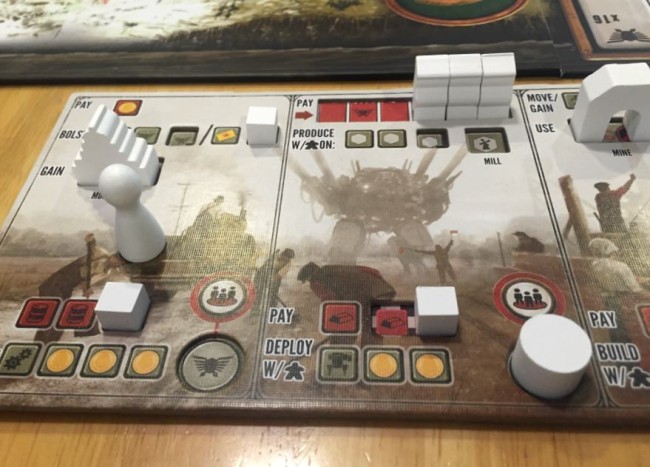
8. Constructing Mechs: As if building a monstrous Mech isn’t cool enough, each time a player builds a Mech, they also get a new special ability. By moving a Mech from their Faction mat, the player reveals a new ability. And that player gets to choose which one to take. With 4 Mechs on their board, they have options for 4 very cool abilities. Two of the options are the same on each mat (Riverwalk and Speed). But the other two are unique to that faction. It’s another example of getting powers in a cool way as you progress.
9. Territory and Resource Control: Many games have an element of territory control. However, in Scythe the territory control is enhanced by Resource control as well. When a player Produces in the territories their workers are on, they don’t collect those resources for their own stash. Instead those resources are left in the territory itself. When a player needs to pay with resources, they take resources from any territory they control that has those resources. So if you lose control of a territory with resources already on it, you’re out of luck because the player who now controls that territory also controls those produced resources.
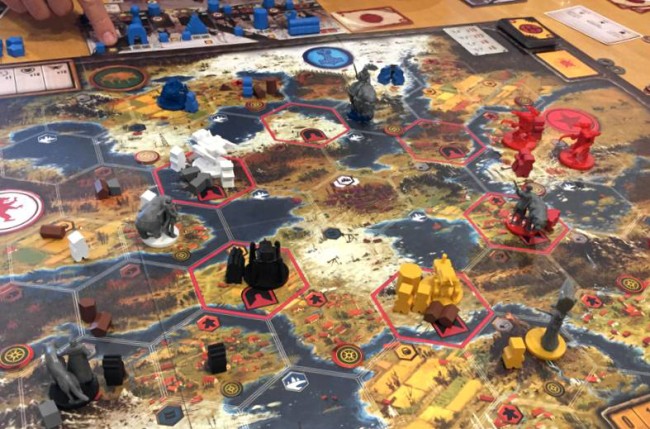
10. Combat System: When players fight for control of a territory, they secretly choose how much power they want to use in the battle. They do this by spending their Power points on the Power track as well as Combat cards they have in their hand (if they choose). So even though all players can see where a faction is on the Power track, they won’t know the value of cards their opponent holds in their hand and may contribute to battle.
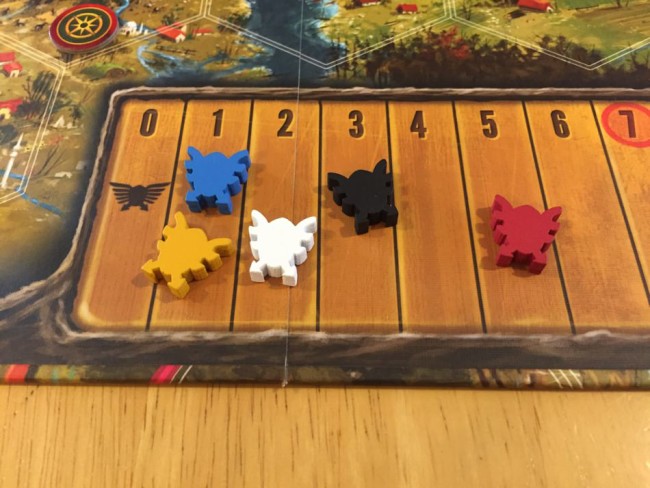
11. Threat of Combat: Even though I love the combat system, I think I enjoy the threat of combat even more. There’s tension in the air when two factions control neighboring territories because you never know when one might attack the other. Just knowing someone could swipe in to steal their resources keeps players on edge. Likewise, players can use positioning potential threats to keep other players from making certain choices. It’s a very cool cat-and-mouse type balance.
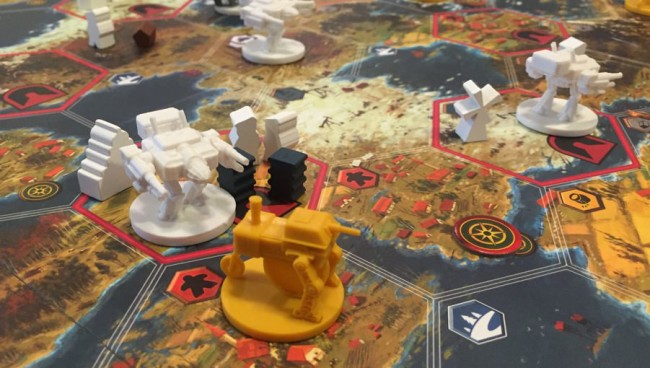
12. Each Turn is Simple: While the overall game is complex, each player turn is quite simple. If a player choose the Move action, all they do on their turn that round is Move. If they choose to Produce, that’s all they do. Then it’s on to the next player. And if a player chooses to do a bottom action, the next player may begin their turn without waiting for the prior player to complete their bottom action.
13. Multiple Achievement Options: A game of Scythe ends when one player places their 6th Achievement star. With 10 possible achievements, players have multiple options in choosing where to focus their efforts.
14. Objective Options: At the start of the game, players are each given 2 Objective cards they can work to complete as one of their accomplishments. Rather than having to choose just one at the beginning of the game, players can see how the game progresses before achieving one of them. This sure beats being stuck with only one objectives at the outset they can’t complete (or do so at a high cost).
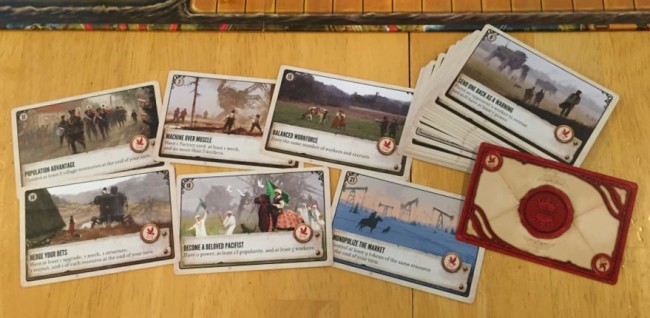
15. Encounter Payouts: Another element of the game that grants players rewards of their choosing is Encounters. As Characters finish in a territory with an Encounter token, they draw an Encounter card and are faced with 3 options of rewards. Players know they’ll get something good, and will get to make the choice based on what they need at the time.
16. Popularity Multiplier: When it comes time to score points at the end of the game, Popularity matters! This is yet another thing players have to manage throughout the game (just like resources, coins, territories, and power). Where players end the game on the Popularity track can have big impact on their score. Being in the higher ranges will generate a bigger multiplier when it comes to scoring achievements, territories, and resources at the end of the game.
17. Variable Structure Placement Bonuses: The last thing players need to manage around is the final scoring bonus for Structure placement. At the outset of a game, one bonus tile is drawn that will dictate how Structure placement will benefit a player (usually based on which type of hex Structures are built on). It will also influence where players are going to be vying for control to build their structures on during the game.
I could go on with more aspects of the game that I love. But this should suffice.
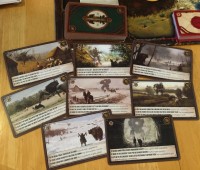
Overall, I think the underlying reason I really enjoy Scythe is because the whole experience feels like a massive puzzle to me. With so many options and directions, my mind is clicking the entire game working through possibilities and then trying to execute against my plan – adjusting as other players throw a wrench (or a Mech) into my plan.
Because of the amount of options in Scythe, I wouldn’t recommend playing with someone who suffers from Analysis Paralysis. Players that have a hard time making a decision and moving ahead with it may stall out on their turns. They’ll slow the game play down and the flow of the game may suffer for it.
Instead, players should go into the game willing to try different options and see where they lead. Even if it’s not the optimal move, it will make for a fun game experience.
How does Scythe score on our “Let’s Play Again” game meter?
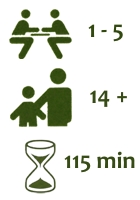 Scythe scores high on my “let’s play again” game meter. In fact, I’d much rather be playing it right now than writing about it.
Scythe scores high on my “let’s play again” game meter. In fact, I’d much rather be playing it right now than writing about it.
After playing a long game, it’s not typical for me to want to play again right after. But Scythe is different.
I’d gladly play Scythe back-to-back.
After one game ends, I totally want to try again with a new combination of faction and player mats and puzzle through a way to win.
Thanks Stonemaier Games for a very fun board game!

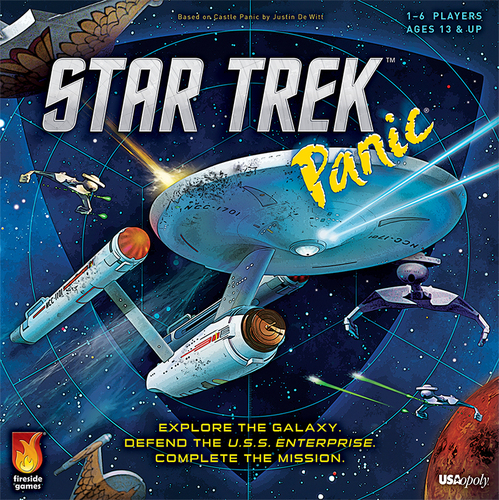
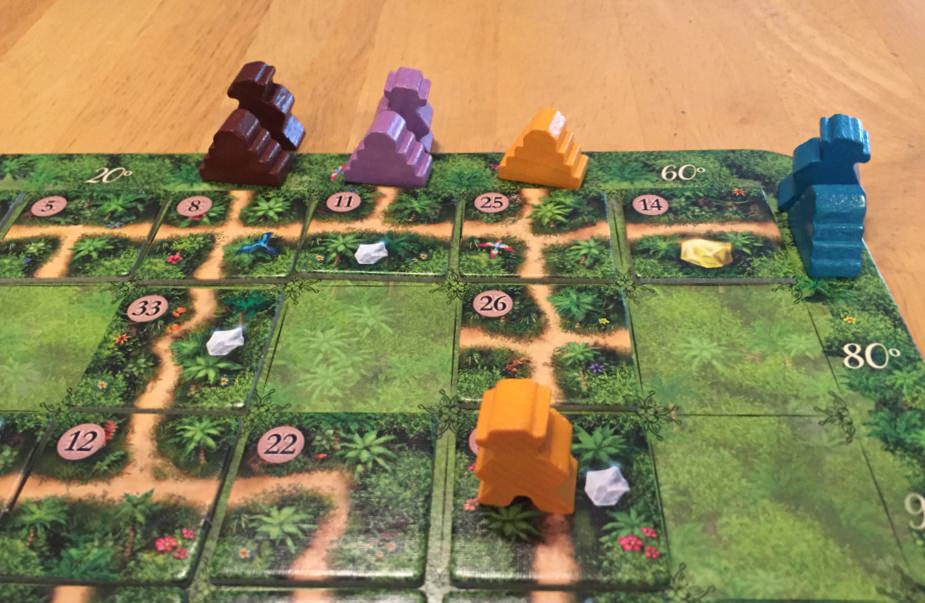
I love the take on this review, pointing out the cool aspects. There are many and I agree it would be hard to name them all. Great job and thanks again for inviting me up to play.
Dane – We’ll have to do it again for sure.
Really great set of points about this game, and might have been the article that put me over the fence to buy it!
Just curious, have you had a chance to give the solo version of Scythe a try yet? Is it any good?
Dillon – I’m glad it was helpful. No, we haven’t tried the solo version yet. But I think I will after I get back from Gen Con.
Scythe scores high on my “let’s play again” game meter. In fact, I’d much rather be playing it right now than writing about it.
Hahahahah you got me with the 17 points, but that final remark Nail it !
Glad you liked it!
Love Scythe! Btw, a small correction… You pay metal to build a mech, not oil. Oil is for upgrades.
Thanks for the catch Mar.
Another slight correction… Sorry I’m late, but I only just played for the first time yesterday. Riverwalk is not the same for all factions. Riverwalking can only be done when moving onto certain terrain types, and those types vary from faction to faction.
Gaston – Yes, that’s correct. What I meant by saying both Riverwalk and Speed are the same on all the board is that those two named abilities are on every board while the other two on each board are unique. However, yes, each Riverwalk ability is different in the terrain type.